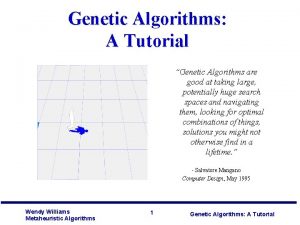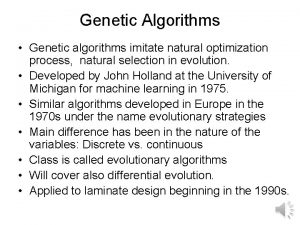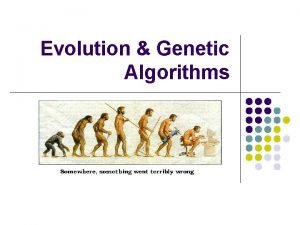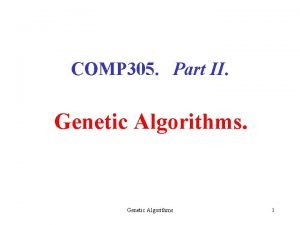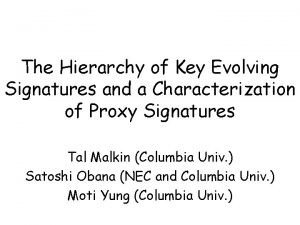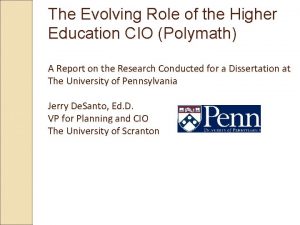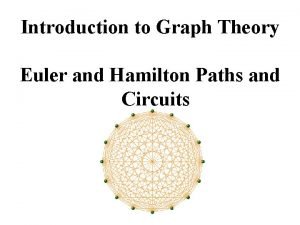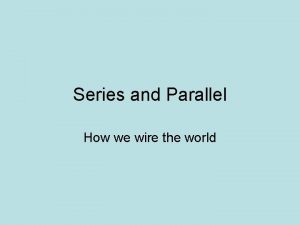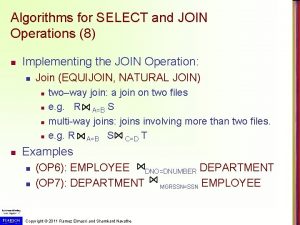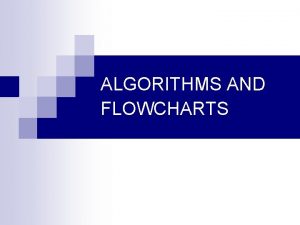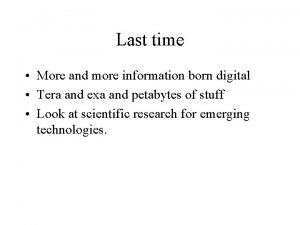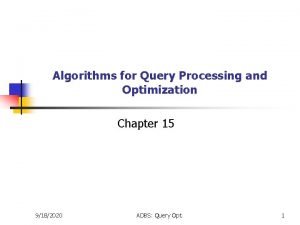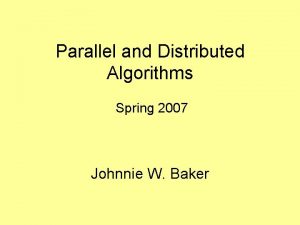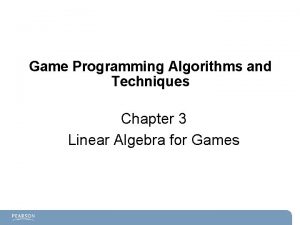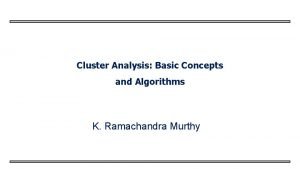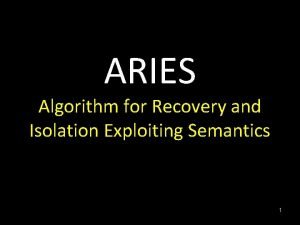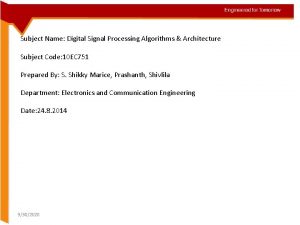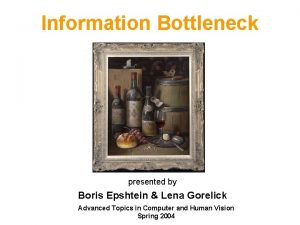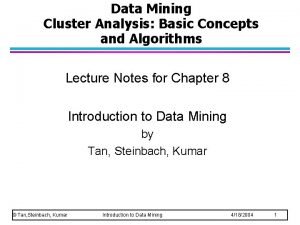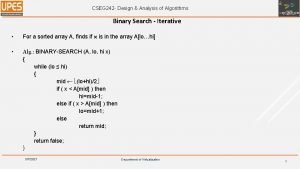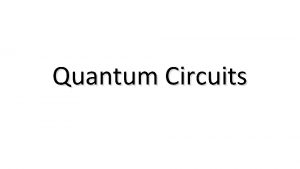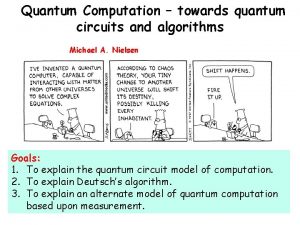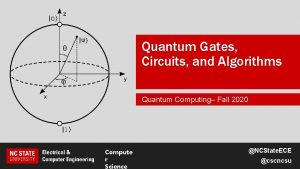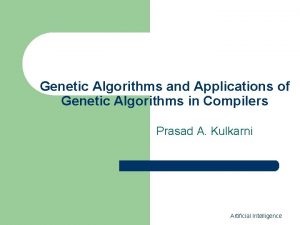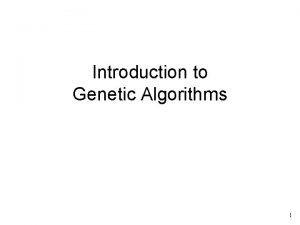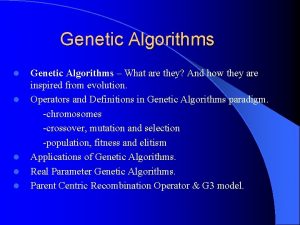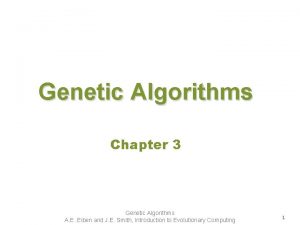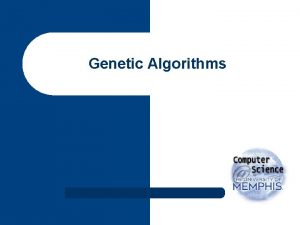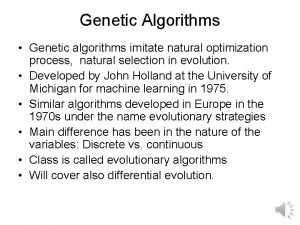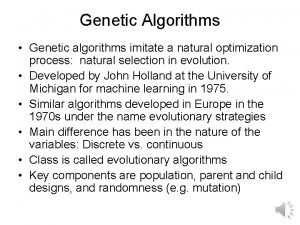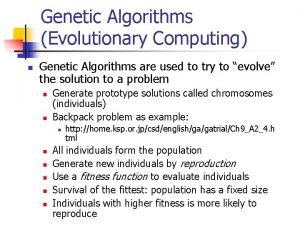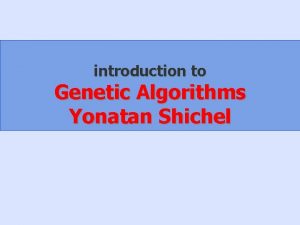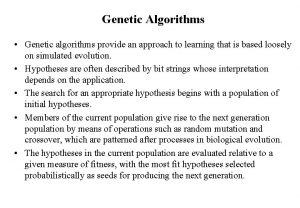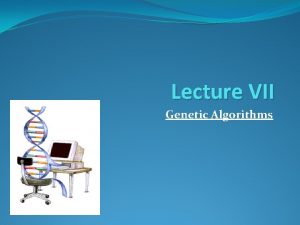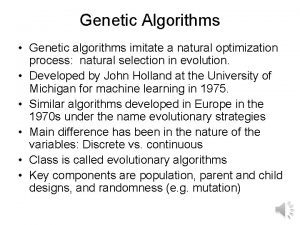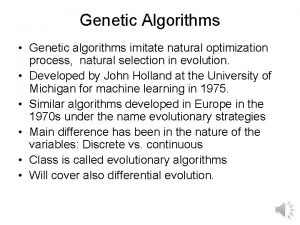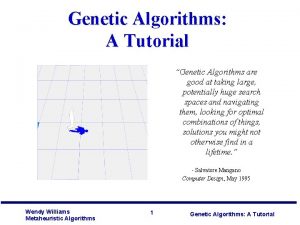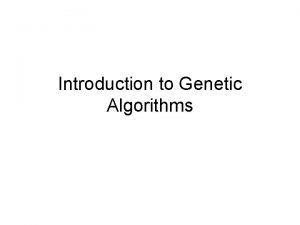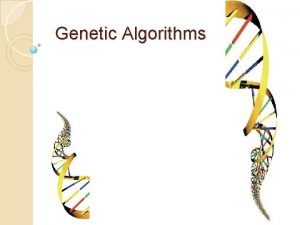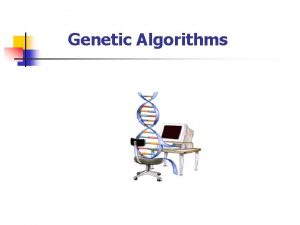Evolving Quantum Circuits with Genetic Algorithms and through




















































- Slides: 52

Evolving Quantum Circuits with Genetic Algorithms and through Exhaustive space search

Outline • Technology – Constraints • • • Design of new quantum primitives Evolutionary and Frame based Generator Exhaustive Search Results Future directions Possible projects

Technology for Quantum Computing

What size of (binary) Quantum Computers can be build in year 2003? • dicarbonylcyclopentadienyl (perfluorobutadien-2 -yl) iron (C 11 H 5 F 5 O 2 Fe ) • 7 bits • Each fluorine and 2 Carbones can be used for computation


Qbits, ¬ bits • In binary quantum logic, the notation for the superposition is |0> + |1>. • These intermediate states cannot be distinguished, rather a measurement will yield that the qubit is in one of the basis states, |0>, or |1>. • The probability that a measurement of a qudit yields state |0> is | |2, and the probability is | |2 for state |1>. The sum of these probabilites is one. The absolute values are required, since in general, and are complex quantities.

Quantum Circuit Synthesis is Technology dependent

Constraints based on the properties of physical implementation of quantum circuits( technology constraints, gate costs) We would like to assume that any two quantum wires can interact, but we are limited by the realization (layout) constraints Structure of atomic bonds in the molecule determines neighborhoods in the circuit. This is similar to restricted routing in FPGA layout - link between logic and layout synthesis known from CMOS design now appears in quantum.

Decoherence plays an important role minimization circuit length Minimization of cascade’s width but each bit counts (more critical than in reversible synthesis) At first, we will be interested only in the so-called “permutation circuits” - their unitary quantum matrices are permutation matrices One solution to layout constraint problem in quantum NMR computers is to take into account in logic synthesis phase only those gate and their placements that are technology-realizable

• Even if conceptually we use higher complexity gates, ultimately we have to build from 2 -qubit gates. • Another possibility is to assume only primitives for the future algorithms are only 2 -qubit gates then the optimal circuit will be the shortest • Bottom line is that basic gate in quantum logic is a 2*2 (2 -qubit gate). • 3*3 Toffoli, Fredkin, de Vos, Kerntopf, Margolus are not directly realizable as a primitive

Molecule - Driven Layout and Logic Synthesis atoms A A B B C D bonds Allowed gate neighborhood for 2 q-bit gates

Quantum wires A and C are not neighbors B A D C A P=A B Q=B C C D D A schematics with two binary Toffoli gates This is a result of our ESOP minimizer program, but this is not realizable in NMR for the above molecule, because there is no connection between A and C, for instance, in the molecule.

a So we have to modify the schematics as follows a b b c c d d Costs 3 Feynman gates

Design of new (complex) quantum gates and their costs

Design a Toffoli Gate from 2 -qbit quantum primitives a b c To a a b b ab c = V V V+ ab c • V & V+ are root square of NOT and its hermitian (complex) conjugate such as V*V =NOT • V: C_V: q-bit 2 unchanged unless q-bit 1 equals to 1

Example: Optimal Solution to Miller Function (AC BC AB) (A B) = AC’ AB BC’ A B B h A C C i * A g AC BC AC (AC BC AB) (A C) = AC AB’ B’C Cost = 1 Toffoli + 4 Feynman gates Cost in Gates: 4*1+5 = 9

2 -qubit quantum realization of Miller Gate Toffoli Cost in Gates: 9*1 = 9 Cost in Gates: 7*1 = 7 V V V+ Cost in Gates: 7*1 = 7 V V+

Fredkin Gate build from Toffoli and Feynman gates Cost in Gates: 2+5 = 7 To b c ab a’c=ac ba’ = c a(b c)=c ab ac=ca’ ac

Transforms a b c V V V+ Cost in Gates: 7*1 = 7 a b c V V V+ Cost in Gates: 5*1 = 5

Evolutionary and Frame-based gate generators

Genetic Algorithm • A set of elements being modified according to evolutionary rules: – – Selection (based on the fitness function) Crossing Over Mutation Replication • These operators are made in generation steps • Process stops when the solution is found • Important in GA • Encoding of the elements/individuals • Complex with a lot of parameters • Simple, task specific no parameters • Fitness function • Simple • Including layout specific constraints • Cost of gates

Circuit Encoding Wire Feynman Circuit matrix representation Walsh Toffoli Feynman Walsh - Kronecker product - Matrix product Wire Toffoli Feynman Walsh Feynman 4 /PWCCNOT/P /PFHH/P /PFF/P

GA for quantum circuit synthesis • Set of elements: randomly generated qcircuits encoded in string representation W H W W W 5 PWSWWPPHWCPPWSWWP H

W X H W Pauli X gate Hadamard gate XOR or CNOT Example Wire

W H X W Evaluation

Calculation H W

Operations Mutation 2 /P Cn /P 2 /P W X /P /P H /P X /P /P Y W /P H X /P /P Y 2 W /P 2 Crossing over 2 /P X Y /P /P 2 /P Cn /P /P H X /P /P Y W /P 2 2 /P X Y /P /P H X /P /P Y W /P 2

Overview Mutation Gates Blocks Position (block/circuit) Cross-Over* Segments Experimental (unitary matrices) Reproduction Circuits Best gates Best Circuits * - for circuits having only same number of I/O

GA’s settings • SUS, Roulette wheel • Fitness: Goal: Fitness: W X H W

Frame-based search starting from Peres gate • Peres gate - the cheapest 3 -qubit gate a a b c V V Adding Feynman gates on all possible pairs of wires on which Feynman is realizable a a a b b c ab c V+ V V V+ ab c a b ab c=(a+b) c C=0 (A+b) C=1 (a+b)’=a’b’

Other frame search examples a) a A=a c b B=a b c V V V+ C = ab ac bc Cost in Gates: 5*1 = 5 b) a A=a c b B = a’b a’c bc c V V V+ C = ab ac bc Cost in Gates: 5*1 = 5

Exhaustive Search

Exhaustive gate search • Searching all gates in a very limited space of permutation 1015 -1018 • Up to 7 segments circuits • 3 I/O circuits • Comparing to gates such as Toffoli, Fredkin, de Vos, Kerntopf, etc.

Exhaustive gate search • Idea: to look for all possible equivalent gates in a certain category • Using specified gates in different technologies • Find the minimal possible cost of the gate

Results

Unitary gate search examples No starting set restriction H 1 1 2 1 Generations: 10 1 -1 1 0 0 Mutation rate: 0. 3 0 0 0 1 0 Generations: 20 Mutation rate: 0. 3

Other gates search Generations: 100 Mutation rate: 0. 4

Random circuit search EPR producing circuit Generations: 450 H Mutation: 0. 3 4 /PWWHW/P /PWWF/P /PWSW/P /PWFW/P /PSWW/P /PFWW/P /PSWW/P /PWSW/P W W W H W W W

Random circuit search “Send” circuit H H Generations: 150 Mutation: 0. 3 3 /PWWH/P /PWF/P /PFW/P /PHWW/P W W H W W W

Examples for Toffoli V V V+ V+ V V V ¬ ¬

Experimental results Number of of inputs generations per qgate p. M p. C 1 - input <50 0. 4 2 inputs <50 3 inputs 50 - 200 Real time (average 20 runs) p. M<0. 2 Number of generations Real time (average 20 runs) Populatio n size 0. 6 < 30 seconds <100 < 1 minute 50 0. 6 0. 4 < 30 seconds <100 < 1 minute 50 0. 6 <1 minute < 3 minutes 60 <200

Experimental results (cont. ) Problem searched Solution F 1/F 6 found Time of search in number of generations F 1/F 6 Toffoli YES/YES <2000 / <50000 Fredkin YES/YES <1000 / <75000 Margolus YES/NO <1000 / <100000

Generalized n*n Fredkin Gate Generalized A P 4*4 A 1 Fredkin. Feynman Gate A P A 1. Q Gate. B B Q. Q P A B Generalized. A n-1 A n-2 f 4*4 n*n Toffoli 2 f 2 Kerntopf fn-1 Af n-1 f ‘n-1 (A 1, …. , Gate A n-1 ) 1 0 C R Gate + A n f n-1 (A 0 1, …. , A n-1 ) R C AAn-1 0 n D S * Q B A f (A , …. , A )A S 0 Generalized Ternary 3*3 n-1 1 n-1 An A f (A , …, ) D 0 n n-1 1 n-1 Toffoli + A n f. Gate ‘n-1 (A 1, …. , A n-1 ) . . . 1 1 1

Future Perspectives

Standard GA Population Crossover New Generation Mutation Population Evaluation Genotype Replication Population Crossover New Generation Mutation Population Genotype: I. e Polarity of GRM Phenotype: Darwinian evolution Logic expression Evaluation Replication Circuit

Lamarckian optimization Population Crossover New Generation Mutation Population Genotype: I. e Polarity of GRM Phenotype: Logic expression Evaluation Replication Circuit Logic Minimizer Modification of the chromosome • An alternative approach to this problem can be the use of Lamarckian approach to the GA. • When a solution is found, the genotype is modified in order to be more precise for a given term-wise polarity set and the given function. • Consequently the search for this individual will induce smallest search space

Baldwinian learning GA Genotype (polarity 1, fitness 1). . . . (polarityr, fitnessr) Learning Polarity Heuristics Phenotype GRM 1, 1. . GRM 1, n Min Cost GRMr, 1. . GRMr, n Min Cost Learning Product terms

Possible projects

Statistical analysis of non linearity in synthesized circuits • During synthesis fitness of circuits is highly non linear and non proportional to the distance from the final gate • Goal: analyze a set of known gates (provided) and make a statistical analysis on the changes of the fitness function of the gates • Finally establishing a table of results where the known gates will be represented as curves of fitness function

Evolving Fitness function for QC synthesis • Inversely to the classical approach the goal is to synthesize a set of parameters fitting on the non linearity present in the fitness function evaluating quantum circuits • Parameters evolved can be either taken from already existing fitness function or a completely new fitness function can be evolved

Pareto optimality GA and QC synthesis • We want to test how will a GA with Pareto optimal evaluation evolve new quantum circuits. • Minimal parameters are the size of the circuit and the error as a measure of the distance from the goal. More parameters can be used as cost, complexity, etc. • Use ranking method to select the best individuals to the next generation

Pareto optimality GA and QC synthesis
 Genetic algorithms tutorial
Genetic algorithms tutorial Genetic algorithms
Genetic algorithms Genetic algorithms
Genetic algorithms Dairy comp 305 tutorial
Dairy comp 305 tutorial What is specation
What is specation Genetic programming vs genetic algorithm
Genetic programming vs genetic algorithm Genetic programming vs genetic algorithm
Genetic programming vs genetic algorithm Gene flow vs genetic drift
Gene flow vs genetic drift What is the difference between genetic drift and gene flow
What is the difference between genetic drift and gene flow Current in a parallel circuit
Current in a parallel circuit Evolving design
Evolving design A framework for clustering evolving data streams
A framework for clustering evolving data streams Key evolving signature
Key evolving signature Evolving
Evolving Classical physics
Classical physics Quantum physics vs quantum mechanics
Quantum physics vs quantum mechanics Conversion of timber advantages and disadvantages
Conversion of timber advantages and disadvantages Through one man sin entered the world, and through one man
Through one man sin entered the world, and through one man Furcation involvement
Furcation involvement Night of the scorpion talks about
Night of the scorpion talks about Euler
Euler Euler and hamilton circuits
Euler and hamilton circuits Pros and cons of series and parallel circuits
Pros and cons of series and parallel circuits Computational thinking algorithms and programming
Computational thinking algorithms and programming Design and analysis of algorithms syllabus
Design and analysis of algorithms syllabus Ajit diwan
Ajit diwan Association analysis: basic concepts and algorithms
Association analysis: basic concepts and algorithms Fftooo
Fftooo Cos423
Cos423 Data structures and algorithms tutorial
Data structures and algorithms tutorial Algorithms for select and join operations
Algorithms for select and join operations Algorithms and flowcharts
Algorithms and flowcharts Undecidable problems and unreasonable time algorithms.
Undecidable problems and unreasonable time algorithms. Information retrieval data structures and algorithms
Information retrieval data structures and algorithms Data structures and algorithms bits pilani
Data structures and algorithms bits pilani Cluster analysis basic concepts and algorithms
Cluster analysis basic concepts and algorithms Randomized algorithms and probabilistic analysis
Randomized algorithms and probabilistic analysis Design and analysis of algorithms introduction
Design and analysis of algorithms introduction Algorithms for query processing and optimization
Algorithms for query processing and optimization Synchronization algorithms and concurrent programming
Synchronization algorithms and concurrent programming Parallel and distributed algorithms
Parallel and distributed algorithms Data structures and algorithms iit bombay
Data structures and algorithms iit bombay Dot product rules
Dot product rules Cluster analysis basic concepts and algorithms
Cluster analysis basic concepts and algorithms Cjih
Cjih Aries algorithm
Aries algorithm Dsp algorithms and architecture notes
Dsp algorithms and architecture notes Boris epshtein
Boris epshtein Data structures and algorithms
Data structures and algorithms Data structures and algorithms
Data structures and algorithms Exercise 24
Exercise 24 Binary search in design and analysis of algorithms
Binary search in design and analysis of algorithms Introduction to the design and analysis of algorithms
Introduction to the design and analysis of algorithms
